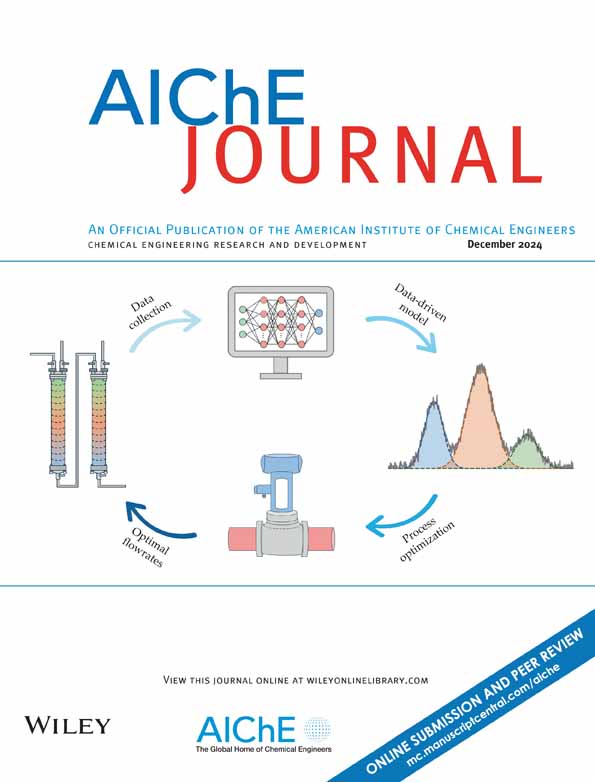Co‐O‐Zn interface engineering for boosting CO2 hydrogenation to light olefins
IF 4
3区 工程技术
Q2 ENGINEERING, CHEMICAL
引用次数: 0
Abstract
The carbon dioxide (COCo - O - Zn界面工程促进CO2加氢生成轻质烯烃
二氧化碳(CO2)加氢制轻烯烃(CO2 - to - C2 - C4=)是一种有前途的高价值利用方法,但面临着低CO2转化效率和烯烃选择性的关键挑战。在此,我们开发了一种氧化物-氧化物界面工程策略来提高CO2 - to - C2 - C4=。优化后的CoOx/ ZnGa2O4-2.5 /SAPO - 34催化剂通过氧化物-沸石(OX - ZEO)双功能串联途径,CO2转化率为27.4%,C2 - C4=产率为15.3%,稳定性为200 h。CoOx/ZnGa2O4中的Co - O - Zn氧化物界面控制良好,有利于CO2的双齿吸附,使暴露的C原子被相邻Zn - O上的异裂解理溢出的H*所吸引。因此,优先生成的HCOO*导致了有效的CO2转化和甲醇前驱体的选择性生成。因此,这种氧化物-氧化物界面工程为通过OX - ZEO途径实现高效的CO2 - to - C2 - C4=提供了一种有前途的策略。
本文章由计算机程序翻译,如有差异,请以英文原文为准。
求助全文
约1分钟内获得全文
求助全文
来源期刊

AIChE Journal
工程技术-工程:化工
CiteScore
7.10
自引率
10.80%
发文量
411
审稿时长
3.6 months
期刊介绍:
The AIChE Journal is the premier research monthly in chemical engineering and related fields. This peer-reviewed and broad-based journal reports on the most important and latest technological advances in core areas of chemical engineering as well as in other relevant engineering disciplines. To keep abreast with the progressive outlook of the profession, the Journal has been expanding the scope of its editorial contents to include such fast developing areas as biotechnology, electrochemical engineering, and environmental engineering.
The AIChE Journal is indeed the global communications vehicle for the world-renowned researchers to exchange top-notch research findings with one another. Subscribing to the AIChE Journal is like having immediate access to nine topical journals in the field.
Articles are categorized according to the following topical areas:
Biomolecular Engineering, Bioengineering, Biochemicals, Biofuels, and Food
Inorganic Materials: Synthesis and Processing
Particle Technology and Fluidization
Process Systems Engineering
Reaction Engineering, Kinetics and Catalysis
Separations: Materials, Devices and Processes
Soft Materials: Synthesis, Processing and Products
Thermodynamics and Molecular-Scale Phenomena
Transport Phenomena and Fluid Mechanics.
 求助内容:
求助内容: 应助结果提醒方式:
应助结果提醒方式:


